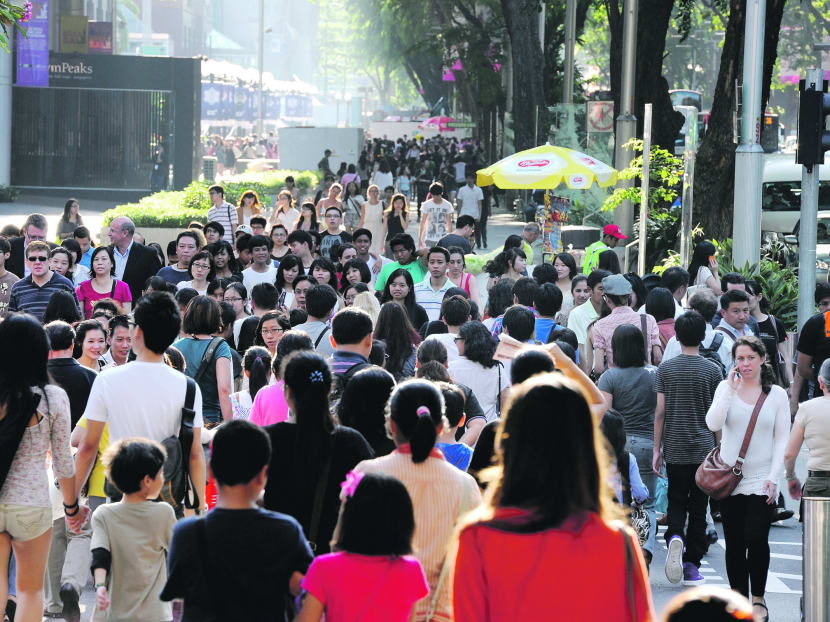Citizen population ‘could decline’ under WP plan
SINGAPORE — Proposals made by the Workers’ Party’s (WP) population policy paper — which, among other things, called for a freeze on foreign worker numbers and a lower immigration rate — could result in a shrinking citizen population from 2030, the Government said yesterday in its official response.
SINGAPORE — Proposals made by the Workers’ Party’s (WP) population policy paper — which, among other things, called for a freeze on foreign worker numbers and a lower immigration rate — could result in a shrinking citizen population from 2030, the Government said yesterday in its official response.
Questioning some of the WP’s underlying assumptions on mortality and labour force participation rates, for instance, the Government said that if a “realistic adjustment” is applied, the WP’s total population projection of 5.6 million to 5.8 million will increase by more than 200,000 and go beyond six million in 2030.
The Opposition party also “underestimated the economic impact” of its proposal to freeze foreign workforce growth, it added.
“The WP frames their proposal as trading off 0.5 per cent in annual GDP (gross domestic product) growth for one million less in population. A key risk is whether a rapidly ageing and stagnant or slow-growing workforce would be able to achieve the productivity targets of 2 to 3 per cent up to 2020 and 1 to 2 per cent beyond 2020, which the WP has assumed.”
The response, which was published on the website population.sg, pointed out that until the Republic’s Total Fertility Rate improves “significantly”, the immigration rate of 10,000 new citizens per year proposed by the WP “does not replace the citizen population, and will result in a decline in the citizen population from 2030”.
The Government said the WP’s projection “assumes a higher mortality rate and lower life expectancy of the citizen population”, which could underestimate both the size of the population and the number of elderly in the population.
Under the WP’s projection, the number of residents aged 65 and above in 2030 would be 170,000 — 18 per cent less than the Government’s projections. This would have implications on the dependency ratio as well as the social and health services needed, the Government said.
By comparison, the Government projects life expectancy at birth to increase, similar to the United Nations’ projection for Singapore.
It added that the WP’s assumptions on labour force participation rates were “much higher than that achieved by advanced developed economies with the highest (rates) today, and may not have taken into account the effects of our ageing population”.
There may be a need to make up for a 100,000 shortfall in the workforce if the WP’s projected rates are not achieved, the Government said.
In Parliament yesterday, Minister of State (Manpower) Amy Khor, who was speaking during the Budget debate, described the WP’s proposal to raise the labour force participation rates by 0.5 per cent per annum till 2025 — to reach about 78.7 per cent, which is higher than Sweden’s current rate of 74.8 per cent — as “hopeful but unrealistic”.
In its paper, which was published about two weeks ago, the WP also projected GDP growth of between 1.5 and 2.5 per cent in the next decade — half a percentage point lower than the Government’s GDP projections — should foreign worker numbers be capped at current levels.
The Government said: “Abruptly closing off foreign worker inflows could disrupt the economy. The net result could be much lower productivity and GDP growth than that assumed. The risk of a contracting economy is much higher and this could impact wage growth and job opportunities.”
Referring to the WP’s proposals of flexi-work arrangements to bring women and seniors back into the workforce, it added: “While better education generally improves the likelihood for women and older residents to work, a large ageing population will offset its effect.”
This happens even in Nordic countries, where there is a higher propensity for the population to work, it said.
The WP could not respond by press time to TODAY’s queries on the Government’s response. However, it said it is studying the response.







